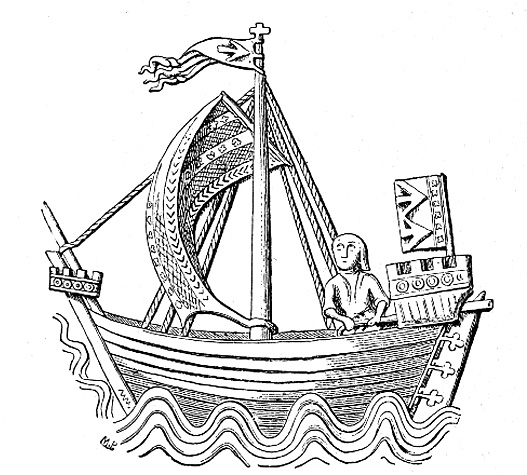Medieval Shipping – The Cog

In my book “Death of the Vintner” the three bishop’s officials of the story arrive at the small harbour town of Tenby in the west of Wales by sea. The ship they travel in was known as a Cog. This type of ship first appeared in the 10th century and was in use across Northern Europe from the 12th century onward. The vessels had a single mast with a square-rigged sail. They were clinker built, usually of oak and ranged in size roughly from fifteen to twenty-five meters in length with a beam between five and eight meters. Some of the largest cogs could easily carry 200 tons.
The cog developed into a sturdy seagoing trader, that was capable of crossing even the most dangerous passages. For defence against Pirates fore and stern castles would be added. The stern castle allowed more cargo space below by keeping the crew and the tiller up out of the way. The cog had reached its full potential by the 14th century and other forms of ship design started to be explored but the cog continued in widespread use for several centuries in one form or another.